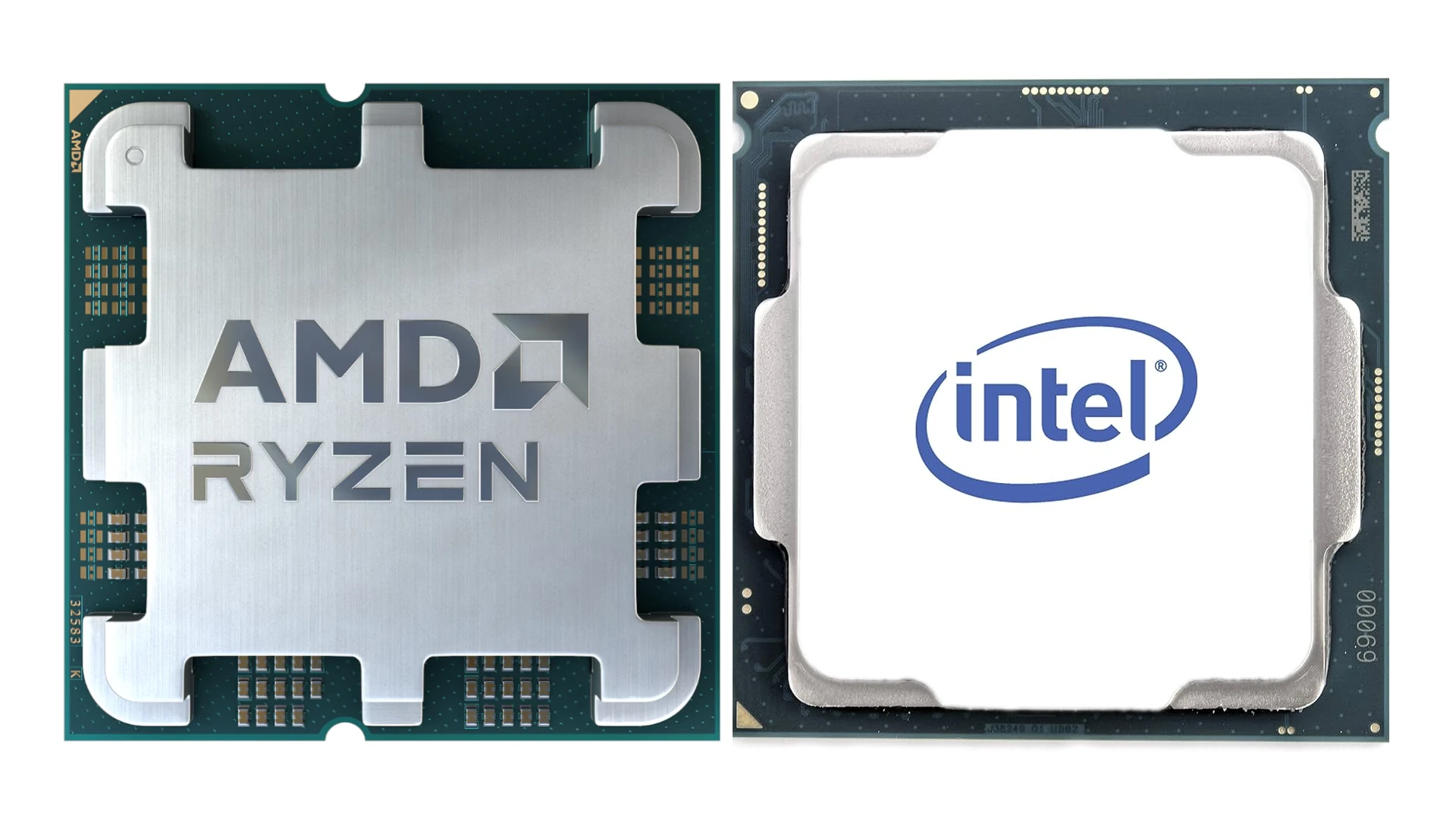Has your computer ever greeted you with a “CPU Over Temperature Error” message? This scary warning shows up when your computer’s brain, the CPU, gets too hot to work safely. The CPU can overheat when cooling fans stop working, thermal paste dries out, or dust builds up inside your computer.
Many people panic when seeing this error, but it’s actually your computer protecting itself from damage. When CPU temperatures rise above safe levels (typically around 80-90°C), the motherboard triggers this alert and may shut down the system to prevent permanent damage.
Fixing this issue often involves simple steps like checking if all fans are spinning, cleaning dust from vents and heatsinks, or replacing old thermal paste. Sometimes the CPU cooler might not be seated properly on the processor, causing uneven heat distribution and hot spots.
How to Fix CPU Over Temperature Error
Seeing a “CPU Over Temperature Error” on startup or during use is a red flag—literally and figuratively. It means your processor is running dangerously hot, potentially risking system damage or throttling performance to avoid it. Don’t panic. This is a fixable problem. Here’s everything you need to know about what causes the error, how to solve it, and how to prevent it from coming back.
🔥 Common Causes of CPU Over Temperature Error
- Dust and Debris in the Cooling System
Dust buildup inside your PC, especially around the CPU fan and heatsink, can block airflow and trap heat. - Faulty or Misaligned CPU Cooler
If your CPU cooler isn’t seated properly or if the thermal paste has degraded, heat transfer from the CPU to the cooler becomes inefficient. - Poor Case Ventilation
Small cases or blocked airflow can trap hot air, especially during high loads like gaming or rendering. - Overclocking Without Adequate Cooling
Pushing your CPU beyond factory specs without a beefy cooler can cause overheating fast. - Fan Failure or Low Fan Speeds
If a fan fails or spins too slowly due to settings or wear, your CPU can’t cool off properly. - High Ambient Temperatures
Hot rooms or summer weather can raise your CPU temps, especially if your cooling setup is borderline.
🛠️ How to Fix CPU Over Temperature Error
1. Clean Your PC
- Power down your PC and unplug it.
- Use compressed air to blow out dust from fans, heatsinks, vents, and power supply.
- Make sure the CPU fan and case fans spin freely.
2. Reapply Thermal Paste
- Remove the CPU cooler.
- Wipe off old thermal paste with isopropyl alcohol and a microfiber cloth.
- Apply a small pea-sized dot of new thermal paste and reattach the cooler firmly.
3. Reseat or Upgrade Your Cooler
- Double-check the mounting brackets.
- If you’re using a stock cooler, consider upgrading to a tower cooler or liquid AIO (All-In-One) cooler.
4. Check Fan Speeds in BIOS
- Boot into your BIOS/UEFI settings (usually by pressing DEL or F2 during startup).
- Look under the “Hardware Monitor” or “Fan Control” tab.
- Make sure CPU fans are running at proper RPMs—consider switching from “Silent” to “Standard” or “Turbo” mode.
5. Improve Airflow
- Add or reposition case fans: intake fans in the front/bottom, exhaust fans at the back/top.
- Use cable management to reduce airflow blockage.
- Keep the PC away from walls or tight spaces.
6. Undo Overclocking
- Go into your BIOS and reset to default or “Optimized Defaults” to stop overclocking.
- Use software like Intel XTU or Ryzen Master to check and reduce voltages or frequencies.
7. Monitor Temperatures in Real Time
- Use software like HWMonitor, Core Temp, or Open Hardware Monitor to check live CPU temperatures.
- Idle temps should typically be under 45°C, and under load should ideally stay under 85°C.
🧊 Prevention Tips to Avoid Overheating in the Future
- Clean your PC every 3–6 months, especially if you have pets or live in a dusty area.
- Keep your PC in a cool, well-ventilated room.
- Set up fan curves using your BIOS or software like MSI Afterburner to ramp up fan speed with CPU load.
- Don’t skimp on cooling if you’re buying a new CPU—especially with high-end models like the Intel i9 or AMD Ryzen 9.
- Invest in a high-quality thermal paste like Arctic MX-6 or Noctua NT-H2.
- Replace failing fans early—they get noisy before they die completely.
🧠 Bonus: When to Worry
If you’re still getting CPU Over Temperature errors after trying all the above, your CPU might be damaged or your motherboard’s sensors are faulty. In rare cases, a failing VRM or motherboard power delivery issue can cause localized overheating. If your temps spike instantly at power-on, seek professional diagnostics.
Key Takeaways
- CPU over temperature errors occur when your processor gets too hot, usually due to cooling problems or dust buildup.
- Modern computers have safety features that shut down the system when dangerous temperatures are detected to prevent permanent damage.
- Regular maintenance like dusting, proper airflow setup, and replacing thermal paste can prevent most overheating issues.
Understanding CPU Over Temperature Errors
CPU over temperature errors occur when your computer’s processor gets too hot to operate safely. These warnings are designed to protect your hardware from permanent damage and help you identify potential cooling issues in your system.
The Basics of CPU Temperature
CPU temperature refers to how hot your computer’s processor gets during operation. Modern CPUs typically operate safely between 30-70°C (86-158°F) when under normal load. Most processors have a maximum temperature threshold around 90-105°C (194-221°F), depending on the model and manufacturer.
When this threshold is exceeded, the system triggers a CPU over temperature error. This error might appear during startup in your BIOS or while using your computer if it has monitoring software installed.
Different CPUs have different temperature tolerances. For example, some high-performance processors might run hotter by design while still operating within safe parameters. Your motherboard BIOS monitors these temperatures through sensors built into the CPU itself.
Common Causes of High CPU Temperature
Improper cooling is the most frequent cause of CPU overheating. This includes issues like a disconnected or malfunctioning CPU fan, which prevents heat from being properly dissipated from the processor.
Thermal paste problems can also lead to overheating. The thermal paste between the CPU and heatsink might be improperly applied, dried out, or missing entirely. This creates poor thermal conductivity.
Dust buildup inside your computer case restricts airflow and insulates components. Regular cleaning of fans, heatsinks, and air vents helps maintain proper cooling.
Poor case ventilation also contributes to high temperatures. Computers need proper airflow through the case, with intake and exhaust fans positioned strategically.
Overclocking, or running your CPU faster than its stock settings, generates additional heat and can trigger temperature warnings if cooling is inadequate.
Optimizing CPU Cooling Systems
Keeping your CPU temperature under control requires a well-designed cooling system that balances hardware choices with proper installation techniques. When done right, proper cooling prevents those frustrating over-temperature errors and extends the life of your computer components.
Choosing the Right CPU Cooler
CPU coolers come in three main types: air coolers, liquid (AIO) coolers, and custom water cooling loops. Air coolers are affordable and reliable, using metal heatsinks with attached fans to dissipate heat. They work well for most users with moderate computing needs.
Liquid coolers offer superior cooling performance for high-performance or overclocked CPUs. These systems use a pump to circulate liquid through a radiator, efficiently removing heat from the processor.
When selecting a cooler, check its TDP (Thermal Design Power) rating to ensure it can handle your CPU’s heat output. Consider your case dimensions as well – some premium air coolers are quite large and may not fit in smaller cases.
For extreme performance needs, custom water cooling loops provide the best cooling but require more maintenance and technical knowledge to install properly.
Effective Application of Thermal Paste
Thermal paste creates a crucial heat-transfer connection between your CPU and cooling system. Without it, air gaps would form and drastically reduce cooling efficiency.
Application tips:
- Clean both CPU and heatsink surfaces with isopropyl alcohol before applying paste
- Apply a small amount (pea-sized or rice-sized drop) in the center of the CPU
- Let the pressure from mounting the cooler spread the paste evenly
- Avoid using too much paste, which can act as an insulator rather than a conductor
Quality matters with thermal paste. Premium pastes like Arctic Silver or Thermal Grizzly Kryonaut offer better heat conductivity than basic options. Replace your thermal paste every 2-3 years as it can dry out and become less effective over time.
Enhancing Case Airflow and Room Environment
Proper airflow within your computer case is essential for effective CPU cooling. Configure case fans to create a balanced path of cool air entering and warm air exiting.
Airflow optimization:
- Install intake fans at the front/bottom of the case
- Place exhaust fans at the rear/top
- Manage cables neatly to prevent airflow obstructions
- Clean dust from fans and components monthly
Room temperature directly impacts cooling performance. Keep your computer in a cool, well-ventilated area away from direct sunlight or heating vents. The ideal ambient temperature for computer operation is between 68-72°F (20-22°C).
Consider adding fan controllers to adjust cooling performance based on workload. During intensive tasks, increasing fan speeds can help maintain safe temperatures, while slower speeds during light use reduce noise.
Troubleshooting and Resolving Issues
When facing a CPU over temperature error, several technical approaches can help identify and fix the underlying problems. These range from software adjustments to hardware modifications that address cooling performance.
BIOS Configuration and Updates
The BIOS (Basic Input/Output System) contains critical settings that control CPU behavior and temperature monitoring. Outdated BIOS versions might have temperature threshold bugs or lack compatibility with newer processors.
Start by entering the BIOS during system startup (typically by pressing Del, F2, or F10). Check the current temperature thresholds and fan control settings. Many motherboards offer options to adjust fan speed curves, allowing fans to spin faster at lower temperatures.
Consider updating to the latest BIOS version from the motherboard manufacturer’s website. This can fix temperature reporting issues and improve system stability.
Some motherboards have temperature reporting offsets that can be adjusted in BIOS. If false temperature readings are occurring, these settings may need modification.
Adjusting Voltage and Overclocking Settings
CPU voltage directly impacts heat generation. Higher voltages produce more heat, while lower voltages can reduce temperatures but may affect stability.
If you’ve previously overclocked your CPU, consider returning to default settings. Navigate to the BIOS overclock or performance section and reset to factory defaults.
For advanced users, undervolting might help. This involves carefully reducing the CPU voltage while maintaining stability:
- Start with small reductions (0.05V increments)
- Test system stability after each change
- Monitor temperatures during stress tests
Power supply issues can sometimes cause voltage fluctuations. Ensure your PSU provides clean, stable power to the CPU.
Technical Support and CPU Maintenance
When DIY solutions fail, professional assistance may be necessary. Contact your computer or motherboard manufacturer’s technical support with detailed information about your system configuration and the exact error message.
Physical maintenance is crucial for temperature management. Properly clean dust from heat sinks and fans using compressed air. Avoid using vacuum cleaners as they can create static electricity.
Consider reapplying thermal paste between the CPU and cooler. Old paste becomes dry and less effective over time:
- Power down and unplug your computer
- Remove the CPU cooler carefully
- Clean old paste with isopropyl alcohol
- Apply a small amount of new thermal paste
- Reinstall the cooler with proper pressure
For persistent issues, evaluate whether upgrading to a more effective cooling solution might be necessary.
Safe Computing and CPU Longevity
Maintaining optimal CPU temperatures is essential for extending the lifespan of your computer hardware. Regular monitoring and understanding your specific CPU’s limits can prevent damage from overheating issues.
Monitoring Tools and Regular Check-Ups
Several free and paid software options exist to help users track CPU temperatures. Programs like Core Temp provide real-time monitoring of each core in processors like the Core i9 series. These tools often display current, minimum, and maximum temperatures.
Set up temperature alerts to notify you when your CPU approaches dangerous levels. Most modern CPUs like Intel’s Ice Lake and Emerald Rapids series have built-in throttling mechanisms that slow performance to reduce heat.
Schedule regular physical maintenance every 3-6 months. This includes:
- Cleaning dust from cooling fans and heat sinks
- Checking that all cooling fans are working properly
- Inspecting thermal paste application (replace every 2-3 years)
- Ensuring proper airflow inside the case
Understanding Product Specifications
Every CPU has specific thermal design parameters. Visit manufacturer websites like intel.com to find the exact temperature limits for your processor model.
The most important specification is TjMax (maximum junction temperature), which indicates the highest safe operating temperature. For most consumer CPUs, this ranges between 95°C and 105°C, but always check your specific model.
Consider these other important thermal specifications:
| Specification | Description |
|---|---|
| TDP (Thermal Design Power) | Heat output under maximum load (measured in watts) |
| Idle Temperature | Normal temp when system is at rest (typically 30-40°C) |
| Load Temperature | Normal temp under full utilization (typically 60-80°C) |
Understand that high-performance CPUs like the Core i9 series generally run hotter than less powerful models when under load.
Frequently Asked Questions
CPU temperature errors can be frustrating but are usually fixable with some basic troubleshooting. These common questions address the most typical scenarios users encounter when facing temperature warnings.
What steps can be taken to resolve a CPU over temperature error on boot?
When facing a CPU over temperature error during boot, first shut down the computer completely and let it cool for 30-60 minutes.
Check if all cooling fans are spinning properly when you restart the system. Dust buildup is a common culprit, so cleaning the inside of your computer case and heatsink can help.
Applying fresh thermal paste between the CPU and heatsink may be necessary if the current paste has dried out. This improves heat transfer and cooling efficiency.
How can one troubleshoot and fix a CPU over temperature error on an ASUS motherboard?
On ASUS motherboards, enter BIOS by pressing F2 or Delete during startup to check current temperature readings. These readings help confirm if there’s an actual overheating issue.
Verify the CPU fan is properly connected to the correct header on the motherboard labeled “CPU_FAN.” Some ASUS boards won’t boot if this connection is missing.
Reset BIOS to default settings using the “Load Optimized Defaults” option if you’ve previously adjusted CPU performance settings or overclocking parameters.
What should be checked if a CPU over temperature error is reported but the CPU does not feel hot?
First, check if the temperature sensor is functioning correctly. Sometimes sensors can provide false readings due to hardware malfunctions.
Inspect the motherboard for any signs of damage or bulging capacitors near the CPU socket. Motherboard issues can cause inaccurate temperature reporting.
Update your BIOS to the latest version. Outdated BIOS firmware can sometimes cause incorrect temperature readings or inappropriate thermal threshold settings.
How does water cooling affect CPU temperature and how can related errors be addressed?
Water cooling typically provides better temperature management than air cooling, especially for high-performance processors. Properly functioning water cooling should prevent most temperature errors.
Check for air bubbles in the cooling loop, as they can reduce cooling efficiency. Gently tilting the radiator while the pump runs can help remove trapped air.
Inspect for leaks or pump failure, which are unique concerns with water cooling systems. A non-functioning pump will cause rapid CPU heating and trigger temperature errors.
What are common reasons for a CPU over temperature error during system startup?
Insufficient thermal paste application between the CPU and heatsink is a primary cause. Too little paste creates air gaps that prevent proper heat transfer.
Improperly mounted CPU coolers can cause poor contact with the processor. Ensure the cooler is securely attached with even pressure across the CPU surface.
Recently upgraded components might generate more heat than your cooling system can handle. More powerful CPUs often require better cooling solutions than stock options.
Which BIOS settings need to be configured to bypass or address a CPU over temperature error?
Adjust the CPU temperature threshold warning in BIOS settings. Increasing this value slightly can prevent false alarms, but be cautious not to set it too high.
Disable automatic overclocking features like Intel Turbo Boost or AMD Precision Boost if your cooling solution is inadequate for the increased clock speeds.
Fan speed control settings can be modified to make cooling fans run at higher speeds. This increases airflow and cooling capacity but may result in more noise.







